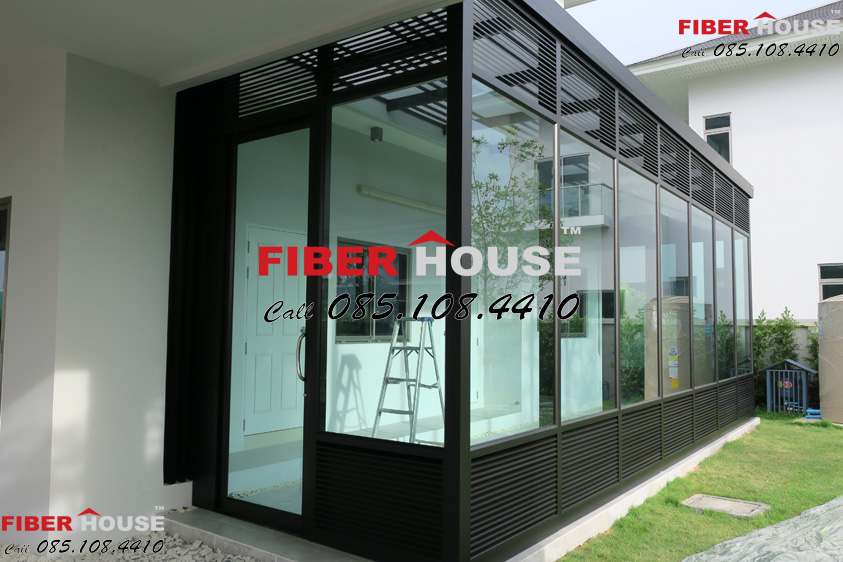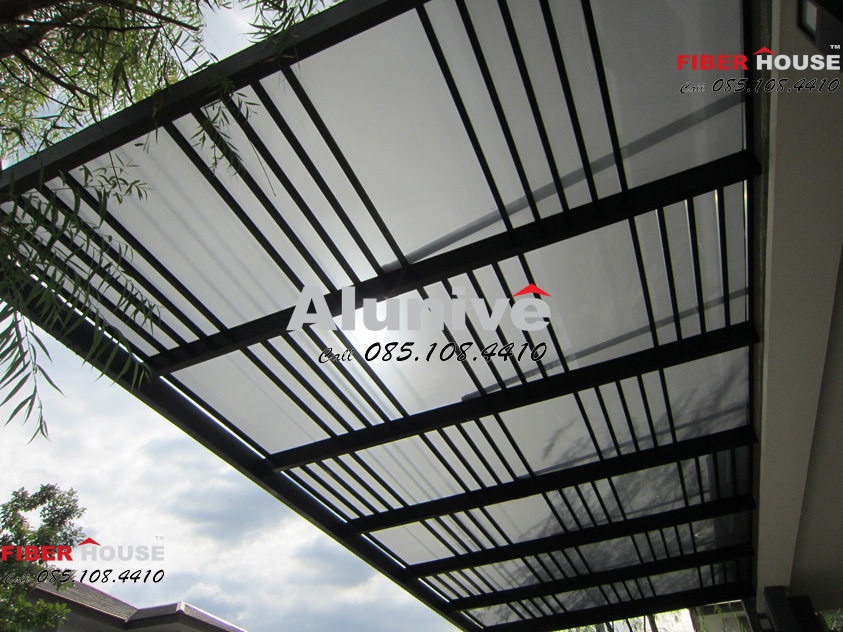Security Glass and Renovation Works
We can’t deny that glass and building construction are inseparable today, owing to its functionality and beauty. Typical glass is easy to find, durable and inexpensive. However, failing or breakage may cause injuries or even death. Particularly speaking, renovations that require the use of glass, including skylight roofing, glass house and glass wall, must prioritize safety. Unfortunately, there has been a misconception that “security glass” is synonymous with “tempered glass”. So, let us share with you the categories of glass that suit best with renovation works.
1. Float Glass
2. Fabricated Glass
3. Glass Substitute

Sample of installation of double-layer security Float Glass
- Float Glass This double sided flat glass is made with float glass process. The glass melting method features the floating of glass components in tin bathing section. Nowadays, majority of glass sheets are manufactured with float glass process. Thailand’s three leading glass plants are Asahi (AGC), Guardian and BFG. Considered basic glass, float glass has the highest consumption volume for it is easy to find and cheap. Float glass comes in a wide variety of shades and sizes. However, broken pieces of glass can be sharp and may cause injuries due to its own weight. Float glass hence suits the use on areas with low risks, such as small door or window on flat ground of a one or two storey house.
- Fabricated Glass Float glass might undergo fabrication process using a variety of methods to suit different requirements. There are a number of plants, both small and large, that manufacture fabricated glass. The following are widely known types:
2.1 Tempered glass can be derived as float glass undergoes toughening process using thermal and cooling treatments. Tempered glass is 3-5 times stronger. Even though broken tempered glass shatters into pebbles, which may curb the chances of injuries, its weight is still dangerous to human, especially when the failing is from high position or the glass is of large size. Interestingly, there are certain risks that tempered glass can break over time due to stress concentrations causing by impurities. It is strictly prohibited to use tempered glass with installation work high up above human head. Still, there have been misuses caused by misunderstanding that tempered glass is security class that can be used with roofing system, which is worrisome.
2.2 Laminate Glass or Security Glass Sandwich Laminate glass is made of two glasses that integrate with polyvinyl butyral (PVB), which features strong adhesion between glass layers and protective film that blocks up to 99% of UV rays. Usually, clear float glass or clear tempered glass is used to produce laminate glass. Able to add shade to the glass sandwich with PVB’s color. Broken pieces will not scatter, but remain in sheet with the attributes of tensile PVB. Laminate glass hence suits renovation works, such as skylight, glass house, glass wall and garage. Even better, it prevents intrusion if each piece of glass comes with ample thickness. However, the double sided glass may cause heavy weights. Installation must be made on the structure with sufficient stability, particularly the roofing. This is because buildings without original supporting capacity might pose impacts on safety, due to the weights of glass and structure.

Sample of installation of Makrolon Sheet ‘Heat Block’
- Glass Substitute
Not a real glass, but comes with a clarity of real glass. Glass substitute features double-sided dense flat glass that resembles a mirror. Currently, there are two types:
3.1 Makrolon Sheet (PC Grade) : the plastic engineering invented by Bayer Germany in 1958
3.2 Plexiglas (Acrylic Grade) : the original acrylic sheet the world has known since 1933
3.1 Makrolon Sheet ( Polycarbonate Grade) :
As the glass substitute that Fiber House was among the first in Thailand to use and pioneered the new market until it became widely known, Makrolon Sheet is a glass equivalent material that fits best with building extension. Owing to its 8 times lighter weight, compared by actual size to real glass, and 2 times lighter than acrylic, it is the safest material, because the weight doesn’t burden the original structure. With the highest tensile strength, Markrolon Sheet features 20 times more impact resistance than acrylic and 250 times stronger than real glass. Categorized as Class 1 Fire Rating for flame retardancy (Class 0 for concrete and Class 100 for wood, equivalent), Markrolon is capable of tolerating continuous temperature of 115 degree celcius, and thus it has become the only material for the production of car lights. Owing to its Elongation at Yield caused by high heat, installation can be sophisticated as a compensation of shrinking parts is required. Expertise is a must in regard to perfectly derive real-glass results. Even though there is now a much cheaper choice called condensed poly sheet, which has become the top choice of many contractors who care most about profitability, Fiber House still puts our trust in the original “Bayer” Makrolon. Despite of its ultra high cost, we prioritize finest quality above sales volume.

Trademark of Makrolon by BAYER German, the inventor who has continued to distribute the material worldwide
3.2 Plexiglas (Acrylic Grade) (Such as Shinkolite)
The first glass substitute that remains popular, Plexiglas, was invented by Otto Rohm, a German scientist, who also patented it with the name Plexiglass in 1933. The material features the clarity similar to real glass and light weight. Acrylic sheet is strong and efficiently durable against scratches. As it is prone to breakage, acrylic sheet with extra thickness is important for projects that prioritize stability, which in turn burden its weight onto the structure. Owing to its stiff and rigid nature, the material can’t be folded for storage and the manufacturing is made into the standard 1.2×2.4 m or 1.4×3.0 m sheet to facilitate transport. For this reason, the installation might require conjoining to extend length, which tends to cause leaks. Moreover, the acrylic sheet also encounters expansion and shrinkage due to harsh sunlight. Severe impact force on joints can also cause breakage or leakage. Minimum thermal tolerance of 75 degree celcius limits regular uses of acrylic sheet away from flames, light bulbs or heating sources. On the other hand, the material features distinctive bending properties. Extension can be made with glue, so the material has been popularly used to form transparent shapes and furniture, such as table, chair, donation box, display box, etc.

Trademark of products in acrylic sheet segment by Plexiglas, the inventor who has continued to distribute the material today

Trademark of domestic products in acrylic sheet segment by SCG that attempted to market them in Thailand in 2016